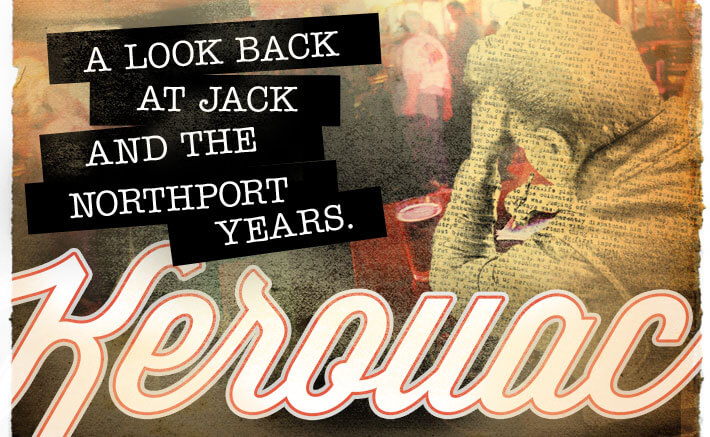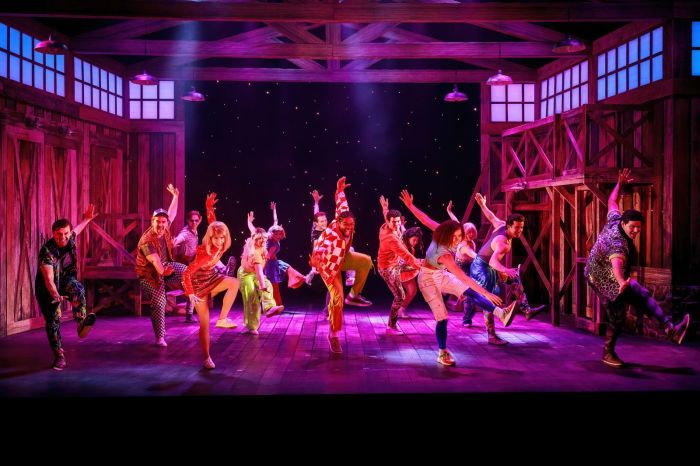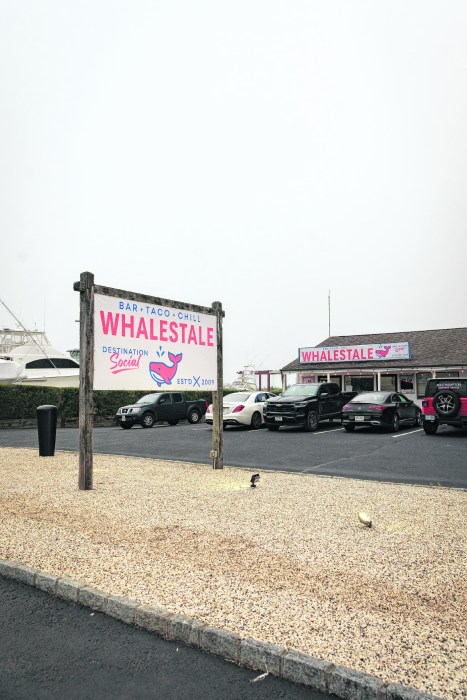Wendy and Gerry Zimmerman point from the stoop of their white two-story ranch on Judy Ann Court in Northport to a scraggly, leafless bramble of thorns abutting the street.
“The rose bush over there,” says Wendy.
“There’s some article where he wrote he loved his rosebush,” adds Gerry. “So I’m assuming that that’s it, but I don’t know. It’s not in very good shape.”
The couple, who bought the house on the quiet cul-de-sac in the hilly harbor village in 2008, tells the Press the emaciated shrub is the only remnant left over from the home’s most infamous resident, poet-novelist Jack Kerouac, the so-called leader of the Beat Movement, who lived in Northport for six years with his mother before leaving for Florida in 1964.
The house on Judy Ann was his third in the village and was constantly bombarded by groupies. Some tossed stones at its windows late at night, hoping to get a peek of Kerouac, who had become increasingly reclusive since moving to Northport. Others wore spray-painted jackets emblazoned with the title of his novel The Dharma Bums. Many wanted to take him out for drinks.
“‘Watch, when it’s his birthday or his anniversary, people would be coming by, kids from college and stuff,’” Wendy recalls the previous owner telling them after the house’s closing.
When Kerouac lived here, he had “a thousand books on many shelves,” according to a 1964 interview with Newsday Staff Writer Val Duncan, conducted inside the home.
“Everybody’s there from Aristophanes to [fellow Beat poet] Allen Ginsberg,” it reads. “Two of the walls blaze with abstract paintings and bright postcards from many lands. Classics, primitives. El Greco, Rouault, Picasso, Van Gogh, Rousseau, Gougin—and many more, contrasting with oriental plaques and soft Japanese mezzotints.”
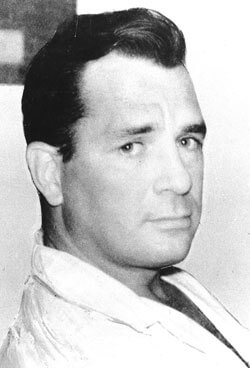 The house was also host to the author’s farewell party in August of that year, his final night in Northport, which included several close friends. The gathering was photographed and recorded by one of them, Northport resident Larry Smith, and became the basis for a 2007 play by freelance writer and playwright Patrick Fenton.
The house was also host to the author’s farewell party in August of that year, his final night in Northport, which included several close friends. The gathering was photographed and recorded by one of them, Northport resident Larry Smith, and became the basis for a 2007 play by freelance writer and playwright Patrick Fenton.
Nowadays, the corridor leading to Kerouac’s old room is covered with tiny-floral-print wallpaper. Instead of French Post-Impressionists, the only abstract artwork hanging from the walls were painted by Gillian, the Zimmermans’ 11-year-old daughter, whose room is loaded with stuffed animals instead of beer cans; toy butterflies rather than a typewriter; and sketches of horses replacing Japanese mezzotints.
March 12 would have been Kerouac’s 90th birthday; he died on Oct. 21, 1969, at 47, of internal bleeding due to alcoholism. This year also marks the 55th anniversary of his second novel, On the Road, which catapulted the then-35-year-old writer into cult stardom upon its publication in 1957, influencing millions and inspiring everyone from Bob Dylan to Hunter S. Thompson.
The book chronicled the mad post-WWII wanderings of Kerouac, as alter-ego Sal Paradise, and companion Neal Cassady, as Dean Moriarty, across North America in a 1949 Hudson.
Forty three years after his death, Kerouac’s presence continues to intensify. On the Road has sold more than 4 million copies to date in the United States and regularly sells 100,000 annually, according to publisher Viking Press. In 2010, a book of letters between Kerouac and poet Allen Ginsberg was also published. Last year, On the Road was released as an iPad app. The movie adaptation will be premiering at the Cannes Film Festival later this year.
While other cities and towns within the Kerouac-ian universe embrace and celebrate Kerouac’s lasting contributions to literature, counterculture and art, annually or permanently—in particular Lowell, Mass. [his birthplace]; San Francisco; New York City; Boulder, Colo.; Orlando and St. Petersburg, Fla., to name a few—Northport, where he retreated in 1958 at the height of his meteoric ascent, has no official commemoration plans this year. In Northport, the reluctant spokesman of the Beats—a word he coined to describe the beaten-down yet “beatific” nature of his generation—is still known to many as simply “Jack.”
“Jack, to me, was just a guy that I knew was on the Steve Allen Show, King of the Beatniks,” says Pete Gunther, 78, owner of Gunther’s Tap Room on Main Street in Northport, one of Kerouac’s frequent local watering holes. “That’s all: a regular customer, drinker.”
Newspaper articles, recordings, photographs and interviews with several people still around who actually knew him during his Northport years paint a picture of a man quite different from the one captured by the media: a shy, loving, caring man who became increasingly reclusive in his attempts to escape the fame thrust upon him, an introvert with a propensity for grandiose performances the more he drank, a dedicated son who sacrificed himself to honor his father’s request to care for his aging mother.
True, Kerouac’s booze-filled antics throughout the then-blue-collar harbor village of clam-diggers and lobstermen in the early 1960s have become the stuff of legends, further fueling his mythological status among fans and critics. But there was another side to the gifted writer. Smith knew it all too well.
“I liked Jack when we were just together, the quiet Jack, where he didn’t feel compelled to perform,” Smith tells the Press, in a hallway of his condo decorated with personal photographs he snapped of his friend. “Which he did when he started drinking and the crowd would grow. He was really shy. And he wasn’t a leader. In On the Road, he chronicled Neal Cassady.”
WITCHES AND WHISKEY
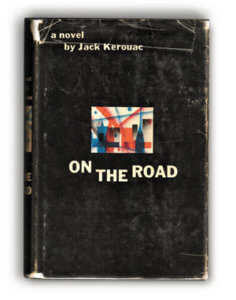
Kerouac had written On the Road at a breathtaking pace, working continuously for three straight weeks, feeding an uninterrupted roll of paper, about 120 feet long, into his typewriter. This “scroll” was bought in 2001 by Indianapolis Colts owner James Irsay for $2.4 million. But it was 1951 when Kerouac finished his masterpiece, and it took him six years—and a lot of living in between—before Viking Press published it on Sept. 5, 1957. Kerouac was 35 years old, and the experiences he described had happened almost a decade earlier. The novel’s appearance in print was hailed by Gilbert Millstein in the New York Times as “a historic occasion…the most beautifully executed, the clearest and the most important utterance yet made by the generation Kerouac himself named years ago as ‘beat,’ and whose principal avatar he is.”
A reviewer in the Village Voice, Arthur Oesterreicher, described the scene in Manhattan a couple of weeks later, by saying “people [are] carrying it in the streets, leafing through it in bookstores, hugging it under their arms as they ride the subway to work…” Concluding his review, he observed, “Beneath the beatness on the surface of everything, Kerouac finds beatitude.” By Sept. 20 the book went into its second printing, with a third printing following shortly afterward, propelling it to the New York Times best-seller list for five weeks later that year.
Kerouac’s books haven’t hit the best-seller lists in years but copies of his best-known work like On the Road, The Dharma Bums and Mexico City Blues continue “walking out the door,” at places like the Book Revue in Huntington, says co-owner Bob Klein. “Kerouac has always sold well and always will sell.”
Viking Publisher Paul Slovak explained what drives the appeal of On the Road, which has sold more than 4 million copies in America alone since 1957, and The Dharma Bums, which came out a year later.
“They are classic novels of freedom and longing,” Slovak tells the Press. “The books resonate with artists, too, because of their messages that you can go out and swim against the tide; you can do things that weren’t supposed to be done.”
When Kerouac’s novels first appeared in the late ’50s, Slovak says, the books “became a rallying cry for the spirit of rebellion at that time…against the Cold War mentality.” But on a more profound level, Slovak says, “They’re quest novels, in a way…. The object of the quest wasn’t so much to have kicks or to find freedom, but was more of a spiritual quest. Their real journey was inward.”
Kerouac was dubbed the “King of the Beats,” and the crown proved too heavy on his head. In April 1958, San Francisco Chronicle columnist Herb Caen had coined the term Beatnik after the Soviets’ recent launch of their Sputnik satellite, and the phrase quickly turned into a pejorative that “caught the public’s imagination as a perfect putdown for what they considered the dirty, bearded, sandaled bohemians of North Beach and Greenwich Village, whose spokesman Jack Kerouac had to be, since his novels described ‘beatnik’ life,” writes Kerouac biographer Ann Charters.
He was mocked on national television and pilloried in the press as the critical backlash unfurled. Time Magazine blasted his writing, which Kerouac’s pal Allen Ginsberg had lovingly described as “spontaneous bop prosody,” and called him a “cut-rate Thomas Wolfe.” Truman Capote said Kerouac wasn’t “writing, he was typing.”
But those were mere words. Things turned ugly one night in April, 1958, when a group of men followed him out of a MacDougal Street bar in Greenwich Village and beat him up so badly that his friend Joyce Glassman had to take him to the hospital. He’d been staying at her apartment while his mother Gabrielle, whom he affectionately called “Memere,” was living in Florida with his sister Nin. Because of his literary success, he decided he better stay close to the city where his editors and publishers were, but he wanted to buy a house on Long Island where he and his mother could live peacefully. Most biographers agree that Glassman suggested Kerouac check out Northport, where she’d visited a friend, and so with filmmaker Robert Frank at the wheel, they drove out to the Island. A realtor showed them a gray Victorian house with front and back porches and a gabled roof at 34 Gilbert Street. Behind the house, as it is today, is a football field. Kerouac supposedly bought it on sight for $14,000. Northport, he’d later say, “was like New England.”
His mother ruled the roost, running the household, paying the bills, and doling out an allowance. She wouldn’t allow drugs and banned Ginsberg from Gilbert Street because he was only interested in “sex and dope.” Kerouac wrote Glassman that his mother’s forbidding Ginsberg from visiting was “strange since I’m buying the house and I’m 36 years old.”
But that description would characterize their co-dependent relationship. Kerouac had promised his father on his death bed that he would always take care of Memere, telling friends that if she died first he’d move to Tibet and live in a hut. The Gilbert address was far from a hut; it was big and comfortable, with an upstairs writing studio and the field beyond his backyard. But it wasn’t too long before Kerouac’s uninvited guests began harassing him and his mother, even trying to climb through a second story window to get to him. He pulled up his roots once again, and moved to Florida, selling the house to Joan and Dave Roberts, whom he got to know through the Northport library. Painfully shy and reticent, he’d slip Joan Roberts a note about the books he was seeking and she and her husband would drop them off.
“He’d really gotten to be very, very reclusive,” says Joan today. “When he was living in Judy Ann, he was so afraid of these kids finding him again, that you would go knock on the door and you would see this little light coming. He would come through this darkened house with a flashlight.”
When she took her kids to their new house, Kerouac told them the grape arbor in back “was haunted.” A few years later, after he’d moved back to town, he told her that there was a poltergeist in the dining room cupboard.
“You see, Northport is full of witches,” he said in an interview he gave to the Northport library in 1964 for their oral history project. “I see ghosts everywhere… Yes, this is a very ghostly town.”
All told, between 1958 and 1964, Kerouac and his mother lived in the Victorian on Gilbert; a remodeled cape on Earl St., where he would write in the basement until it got too cold and damp, and then work in the attic; and Judy Ann Court.
But he could never find the peace and quiet he sought.
“People are always bugging me,” Kerouac told Newsday’s Duncan. “Once a guy crashed in at five in the morning and screamed, ‘Are you busy?’”
As Ann Charter wrote, “oppressing him were too many drunken nights in New York bars playing the role of King of the Beats and too many brooding, introspective days hung over in his house on Long Island snapping at his mother, sick to death of himself.”
Sue Zizza, who produced Pat Fenton’s play, titled Jack’s Last Call: Say Goodbye to Kerouac, for public radio, noted that once Ginsberg got involved with the burgeoning hippie movement in San Francisco he had no one from his old “support system” to look after him.
“Northport was more about his living a quiet life, having some friends, and not being on display in the same way he’d be if he went to the White Horse Tavern and other New York City haunts where Cassady hung out,” she says. A last-ditch attempt by Cassady to bring his former road buddy along with him on the new trip he was on with Ken Kesey proved disastrous.
In 1964, months before Kerouac permanently left town, Cassady drove out to Northport behind the wheel of the psychedelicized “Furthur” school bus immortalized in Electric Kool-Aid Acid Test by Tom Wolfe. “He goes to Gunther’s with that goddamn thing,” Fenton says, “and it’s backfiring and it’s got that crazy music going on.” He convinced Kerouac to climb on board so he could take him to a party Kesey was having on Park Avenue. Kerouac “keeps asking Cassady if he has any beer, but all he’s got is acid and stuff,” Fenton says, whose play will be performed in Lowell as part of its “Celebrate Kerouac” 90th birthday commemoration.
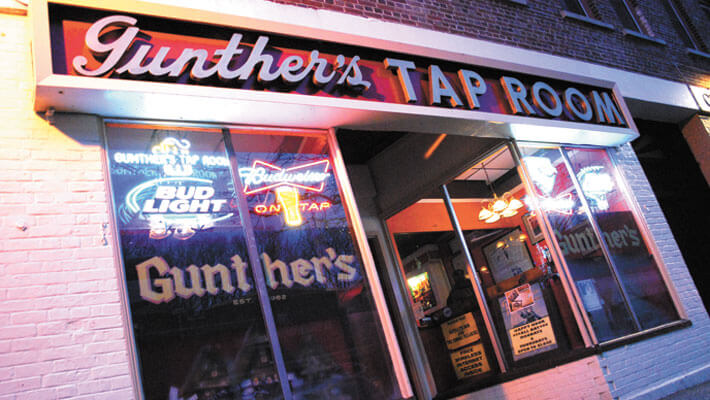
DESOLATION ANGEL
The interior of Gunther’s Tap Room on the sloping, idyllic harbor-view of Main Street hasn’t changed much since the days of Kerouac’s “four or five times a week” visits, says Pete Gunther, who bought the place in 1962 and ran it with his mother.
“Northport was more of a blue-collar town then,” he says. “Now it’s a little touristy. We used to have 100 clam diggers out there, working. And we used to have at least 10 or 15 fisher and lobstermen. Then you had the oyster boat right off the harbor there.
“Years ago, if you had a rainy day, I was going to be busy from 9 o’clock in the morning till 5 at night. I’d always end up with a fight, though. If I had two good friends, by the time they got drunk, they’d end up duking it out together. I’d have to get in the middle of it. And then by the time they got done, they’d be shaking hands.”
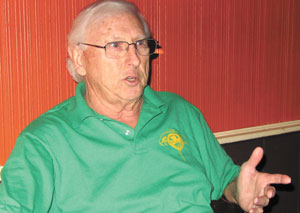
There aren’t many signs of Kerouac’s hours spent at Gunther’s nowadays other than a framed poster near the front window announcing Fenton’s play. The bar used to host an annual poetry night called The Kerouac Connection, organized by local poet BJ Cassidy. Occasionally, says Gunther, people stop by asking about Kerouac, but it comes in waves, every few years.
The writer used to sit beside an old gas heater, which has since been removed, continues Gunther. Sometimes, other Beat friends would visit him there, he says, such as Allen Ginsberg, whose 1956 poem “Howl” solidified him as a leading figure of the Beat Generation—and who, Gunther says, spent one summer digging for clams in Northport Harbor.
Kerouac was known to walk around town barefoot or wearing a pair of red, tattered slippers—which he also wore to Gunther’s, says the bar owner, because, “You’d have broken glass on the floor.”
A glass of beer back then was 15 cents. Though “always broke,” says Gunther, Kerouac would come in with a roll of nickels his mom doled out for him. And somehow, he always wound up drunk.
“My mother—I’d come relieve her about 5 o’clock and I’d say to her, ‘How the hell did Jack get so drunk?’ She says, ‘Well, he’s only been drinking beer!’ Every once in a while somebody would buy him a shot or something, but—finally, after a couple weeks, I go, ‘How the hell?’” recalls Gunther.
“Jack used to come in with a little valise,” he laughs. “He’d go in the bathroom, take it, and pour himself a drink and drink it in the bathroom. So finally then, my mother said, ‘Every time, Jack—you’ve got to check your valise, Jack.’
“Canadian Club,” he adds.
For a tip once, says Gunther, Kerouac gave him an autographed copy of 1963’s Visions of Gerard.
“I gave it away,” he laughs, though adding that he still has two paintings by the late local abstract painter and photographer Stanley Twardowicz, a friend of Kerouac’s who used to own a studio across Main Street from the bar.
Twardowicz and Smith used to play softball with the writer on Sundays at Ocean Avenue school and would end up at Gunther’s, he says. Kerouac would somersault when he’d miss a shoestring catch and come up smiling, Smith says.
For Smith, however, Kerouac was much more than just a fixture on Main Street.
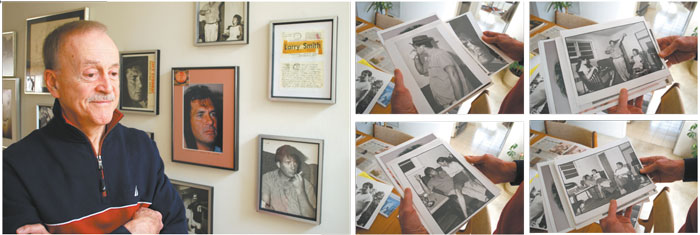
BEATIFIC
Smith, 82, is an accomplished photographer and architect—whose firm designed Northport Village Hall—and lived his own On the Road-style adventures traveling the world, three years in the Navy and three years by way of a 1958 Volkswagon. He recalls his time with Kerouac fondly.
The photographs take up several feet of Smith’s hallway at his apartment, a space he calls his “Kerouac corner.”
There is Kerouac seated in a recliner, holding his head while Twardowicz’s wife Ann sits on his lap and plays with his hair. There is Kerouac standing in front of a doorway, pointing upward in a goofy pose. There is Kerouac wearing a fedora with its brim turned up, or pensively staring outward, surrounded by empty cans of beer. Among the images is a postcard, sent from Kerouac to Smith in 1965 from St. Petersburg, Florida—discussing the photo that would be used for The Desolation Angels.
Unlike Kerouac, who had no car or 9-to-5 job during his Northport years, Smith worked during the day, so most of their time together was spent in the evenings or on weekends—on the softball field, over dinner prepared by his ex-wife Tsuneko, or over beers at Twardowicz’s studio and apartment.
It’s during these moments, says Smith, when Kerouac would reveal himself.
“We would invite Jack over occasionally for a very modest meal,” he says. “He’d dress up, he’d wear his slippers or whatever, his plaid shirt,” he laughs. “And we’d have pasta and wine and we’d go down and sit on the porch and look out over the harbor.
“Whether he was telling a story or whatever, he was just completely relaxed,” Smith continues. “And then this one time there that we were sitting on the porch overlooking the harbor, he says, ‘You know, I’m the only major writer in this country that’s never received a literary prize.’ Very wistful.
“But I much preferred being with the quiet, sober Jack than the drunken one,” adds Smith, who was eight years Kerouac’s junior. “And he paid me a left-handed compliment one time. Because we’d be at his house and there’d be knocks on the door and it would be groupies coming in. And you can see Jack’s not in great shape. He’d go to the door and they’d say they were looking for Jack Kerouac. And he turns to me and he says, ‘They expect to see you answering the door.’
“He could be a pain in the ass sometimes,” he laughs, “and then he could be the most charming, engaging and interesting guy.”
Despite its relegation as a dark footnote in his career, Smith and Fenton believe Kerouac’s time in Northport did have significant meaning to the author, and that had he remained, it could have prolonged his life.
“I think it meant a lot to him,” says Smith. “He had this coterie of friends here and he was comfortable with us.”
“I think in his Northport years there really wasn’t much more in him,” says Fenton. “I mean, if it was in him, he certainly couldn’t get it down on paper. You can’t stay drunk and try to write, man, you know.”
Fenton doubted that the author could have ever matched his earlier literary triumphs, but “had he stayed there, it would have saved his life, because it was the only protection that he had.”
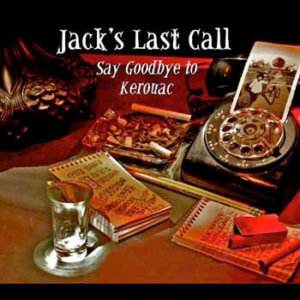 Hear excerpts of “Jack’s Last Call: Say Goodbye to Kerouac,” an audio play written by Patrick Fenton and directed and produced by Sue Zizza.
Hear excerpts of “Jack’s Last Call: Say Goodbye to Kerouac,” an audio play written by Patrick Fenton and directed and produced by Sue Zizza.
The play, which was recorded in part at Gunther’s Tap Room and has been aired on 70 public radio stations since 2008, depicts Kerouac’s final night in Northport with his few remaining close friends and introduces the many important people who shaped his lifework.
Click here to purchase Jack’s Last Call: Say Goodbye to Kerouac.
[audio:kerouac_01.mp3] [audio:kerouac_02.mp3] [audio:kerouac_03.mp3]



